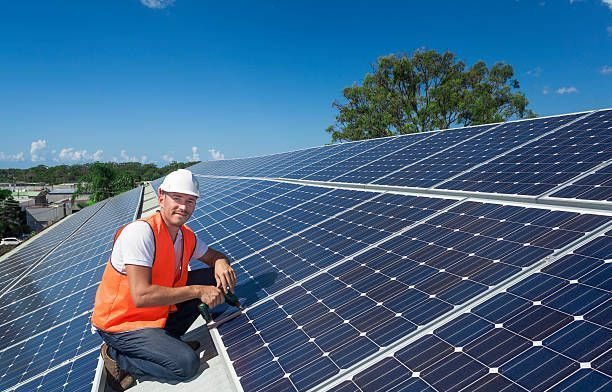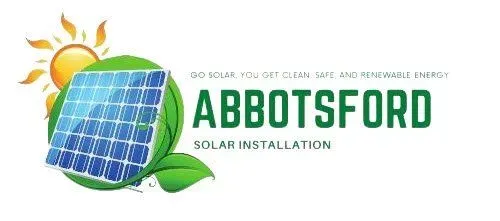Abbotsford Solar Installation
How Much Money Can You Save From Residential Solar Panels? Top Answers From Solar Panel Installation Companies
Solar panels directly offset your electricity consumption from the grid. A well-sized system in Abbotsford, with an average household electricity consumption of 800 kWh/month, could potentially generate enough power to cover a significant portion of this usage.
Abbotsford receives good solar radiation, averaging around 4.5 peak sunshine hours per day. However, factors like roof orientation and shading can significantly impact energy production.
Your solar panel system's size and efficiency directly affect savings. Higher kW ratings generate more electricity but come at a higher initial cost. Panel efficiency, ranging from 15% to 22%, ascertains the extent of converted sunlight into usable energy by solar panel installation companies.
Reducing Reliance on Fossil Fuels and Harmful Emissions
Fossil fuels—coal, oil, and natural gas, have been the dominant energy source for over a century. However, their combustion releases harmful greenhouse gases (GHGs) like carbon dioxide, a key contributor to climate change. Switching to renewable energy sources is crucial to mitigate climate change and its detrimental effects.
- Renewable sources, like solar PV systems, wind, geothermal, and hydro, offer a sustainable alternative to fossil fuels.
- Solar energy system converts sunlight into electricity through the photovoltaic effect, a clean and silent process.
| System Size (kW) | Annual Solar Energy Production (kWh) | Carbon Emission Reductions Per Year (metric tons) | Equivalent in Typical Vehicle Emissions (Years) |
|---|---|---|---|
| 2 | 2,840 | 2.1 | 0.45 |
| 3 | 4,260 | 3.2 | 0.68 |
| 4 | 5,680 | 4.2 | 0.89 |
| 5 | 7,100 | 5.3 | 1.13 |
| 6 | 8,520 | 6.3 | 1.34 |
| 7 | 9,940 | 7.4 | 1.57 |
| 8 | 11,360 | 8.5 | 1.81 |
| 10 | 14,200 | 10.6 | 2.26 |
| 12 | 17,040 | 12.7 | 2.70 |
| 15 | 21,300 | 15.8 | 3.36 |
To put things in perspective, a standard car releases roughly 4.7 metric tons of carbon dioxide annually. This translates to a 6 kW solar power system effectively counterbalancing the carbon footprint generated by a single fossil-fueled vehicle in a year.
Vancouver's Solar Energy Production
Seasonal Trends
- Solar radiation peaks in July (6.40 kWh/m²/day) due to longer daylight hours and stronger sunlight. Conversely, December experiences the lowest solar radiation (0.94 kWh/m²/day) with shorter days and weaker sunlight.
- AC energy production in July is the highest (587 kWh) due to abundant solar radiation. December, with the lowest solar radiation, also has the lowest (95 kWh).
Annual Averages
- The average daily solar radiation throughout the year is 3.72 kWh/m². While summer offers peak sunlight hours, the annual average provides a more holistic perspective on Vancouver's solar climate.
- The total AC energy generated for the year is 4,201 kWh. This is a significant amount of electricity that can potentially offset a substantial portion of rising energy costs in a household's annual electricity consumption.
The Core Advantage of Residential Solar Panels
"Smart" meters, which track real-time energy usage, can be helpful in solar installation. Ideally, the solar panel system's energy production should closely match your consumption patterns to maximize offsetting grid electricity purchases.
- A research by the Australian Renewable Energy Agency (ARENA) showed that homeowners with net metering can reduce their electricity bills by as much as 80%.
- A 2022 inquiry by the Lawrence Berkeley National Laboratory (LBL) found that properly sized solar panel systems can offset 50% or more of a typical household's electricity consumption. Understanding your household's electricity consumption profile is crucial.
Net metering is a critical program offered by many utilities. It allows excess solar energy produced during peak sunlight hours to be fed back to the grid. Your utility meter runs backwards, crediting your account for the exported electricity. This reduces your overall electricity purchases from the grid during non-peak hours.
Savings Estimates
Abbotsford residents with a well-designed 6 kW solar system generating an estimated 8,000 kWh annually could potentially achieve savings of $1,200 to $2,000 per year, depending on electricity rates and participation in the Feed-in Tariff program.
Long-Term Savings and Investment Potential of Installing Solar Panels
A 2023 report by the Zillow Group found that homes with solar panels sold for an average premium of $9,272 compared to non-solar homes.
Payback Period and Return on Investment (ROI)
Payback Period
This refers to the number of years it takes for the cost savings from solar to offset the initial system installation cost. This period can vary from 5 to 10 years in Abbotsford, depending on factors mentioned earlier (electricity usage, system size, financial incentives). Homeowners can expect to save an average of $1,530 on annual energy bills, with a payback period of around 9 years for most installations.
Return on Investment (ROI)
Once the payback period is reached, the ongoing electricity cost savings translate into a positive return on investment. This suggests that solar panel systems can have an ROI of 10% or higher over their lifespan.
Lifespan and System Degradation
Solar panels boast a lifespan of 25-30 years. During this period, their efficiency degrades slowly, at a rate of around 0.5% per year. While still functional, this minor degradation should be factored into long-term savings calculations. Reputable solar energy companies consider this factor during system design to ensure sufficient energy production throughout the lifespan.
How Much Are Solar Panels?
Cost Structure and Pricing per Watt
Solar panel system costs are typically quoted in terms of "price per watt". This reflects the system's capacity to generate electricity. A higher wattage system will produce more power but also come at a higher cost. Based on data from Market Watch Guides, the average cost of home solar systems in the US is $2.85 per watt, translating to $2,850 per kilowatt.
System Size and Overall Cost
| Home Solar System Size (kW) | Typical Cost in the CAD | Net Price After 30% Federal Tax Credit (USD) |
|---|---|---|
| 5 | 18,525 | 9,975 |
| 6 | 22,230 | 11,970 |
| 7 | 25,935 | 13,965 |
| 8 | 29,640 | 15,960 |
| 9 | 33,345 | 17,955 |
| 10 | 37,050 | 19,950 |
Government Incentives for Residential Solar Panels
Canada Greener Homes Grant
This federal government grant program provides financial assistance for homeowners undertaking energy-efficient home retrofits, including solar panel installations.
- For solar panel installations purchased in Canada, homeowners can receive a grant of $1,000 per kilowatt of installed capacity, reaching a maximum of $5,000. This represents a significant financial incentive, potentially covering around 25% of the cost for a typical 5 kW system. Additionally, a separate $1,000 grant is available for batteries connected to photovoltaic systems, promoting energy storage capabilities.
- The Canada Greener Homes Grant directly reduces the upfront cost of solar panel installation, hasting the payback period and increasing the ROI.
City of Toronto Home Energy Loan Program (HELP)
This program, specifically for Toronto residents, offers interest-free loans to homeowners for various energy efficiency upgrades, including solar panel installations. By providing interest-free financing, the HELP program allows homeowners to spread the cost of solar over a longer period.
Feed-in Tariff Program
This program allows homeowners with solar grid tied systems to receive compensation for excess electricity they generate and feed back into the grid.
- Like net metering, during peak sunlight hours, your panel modules produce more electricity than your home consumes. The Feed-in Tariff program offers a financial incentive for this exported energy. The specific rate you receive depends on the program version you participate in (MicroFIT or FIT).
- The Feed-in Tariff provides additional financial rewards for solar power generation, further reducing your reliance on grid-purchased electricity and accelerating potential payback periods.
Provincial Sales Tax (PST) Exemption
BC offers a 7% PST exemption on alternative energy generation equipment, including solar panels. This exemption directly reduces the upfront cost to install solar panels, further enhancing its financial attractiveness.

Empowering Your Home with Solar Savings
Are you uncertain about the cost savings of residential solar panels? We have broken down the key factors impacting your potential savings in Abbotsford. From understanding your specific electricity usage to maximizing long-term financial benefits and environmental impact, solar power offers a compelling path to energy independence and a sustainable future.
Frequently Asked Questions
Will my roof type impact the cost or efficiency of my solar panel system?
Yes. South-facing roofs with a good tilt angle (around 30 degrees) offer optimal sunlight exposure and efficiency. Complex roof structures might require additional installation work, impacting the overall cost. Qualified Abbotsford solar installers can assess your roof suitability and propose the best system layout.
How much maintenance do solar panels require?
Solar panels are relatively low-maintenance. Rain typically cleanses them naturally. However, occasional professional cleaning (every 1-2 years) is necessary to remove built-up dust or debris that can slightly reduce efficiency.
What impact does shading have on solar panel efficiency?
Shading from nearby trees, chimneys, or even your own roof structure can significantly reduce solar panel output. Solar panel installation company uses specialized tools to analyze potential shading patterns throughout the day. Optimizing panel placement or strategically trimming trees can maximize sunlight exposure and ensure optimal efficiency.
Go Solar. You get Clean, Safe, and Renewable Energy.

CONTACT US
36092B Regal Pkwy, Abbotsford, BC
V3G 1L1, Canada
USEFUL LINKS
Book a Service
We will get back to you as soon as possible.
Please try again later.
All Rights Reserved | Abbotsford Solar Installation |